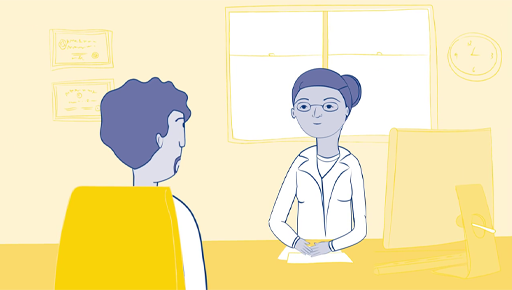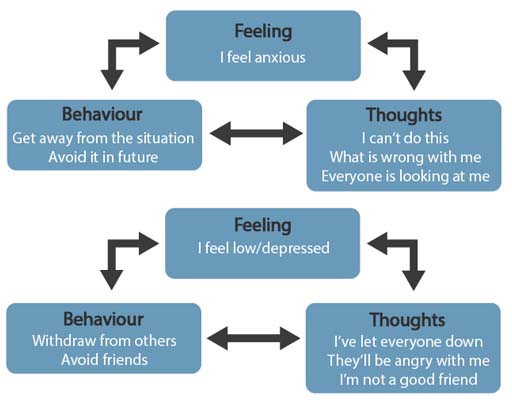2.1 Cognitive Behavioural Therapy
Talking therapies, especially CBT (Cognitive Behavioural Therapy), can be useful in a range of mental health problems, for example depression, anxiety, post-traumatic stress, panic disorder, obsessive-compulsive disorder and body dysmorphic disorder. You will recall one of the parents talking about her daughters mental health in Session 1 and how she benefited from CBT. Although CBT is usually conducted face-to-face on a one-to-one basis, it is increasingly offered online, usually as an adjunct to appointments with a therapist, and has been found successful (van der Zanden et al., 2012; Spence et al., 2011).
The idea behind CBT is that a young person is helped to examine and to challenge the way they think as well as what they do. Thoughts, emotions, physical symptoms and actions (behaviour) interact in all directions. Briefly familiarise yourself with the diagram below and then move on to the activity.
Activity _unit9.2.1 Activity 4: Making sense of CBT
Imagine that a young person you are caring for or supporting has been referred for CBT. They don’t think talking will help and complain that they don’t want to ‘lie on a couch discussing their dreams’. Watch this video and make a note of some of the things you can say to help address their concerns and convince them to give therapy a go.

Transcript: Video 2: What is CBT? | Making Sense of Cognitive Behavioural Therapy
Discussion
It’s about helping a person to manage their mental health challenges while staying in the present, and teaching coping skills. It can help the young person understand how their negative thoughts are affecting the way they feel and act. If CBT turns out to be unhelpful, there is no shame in asking to try alternative approaches.
A key skill for CBT practitioners is active listening. You will remember addressing skills in listening in Session 6. You may have noticed in the video that the therapist’s questions follow closely from the patient’s descriptions of his feelings, gently prompting exploration of his beliefs. CBT therapists need to listen carefully and attentively so that they can ‘tune in’ effectively to the patient.

